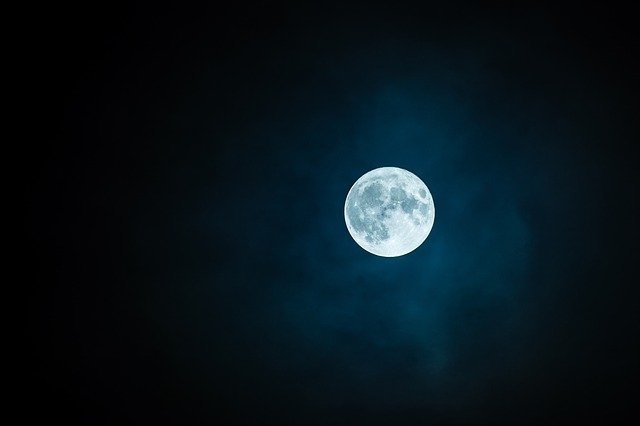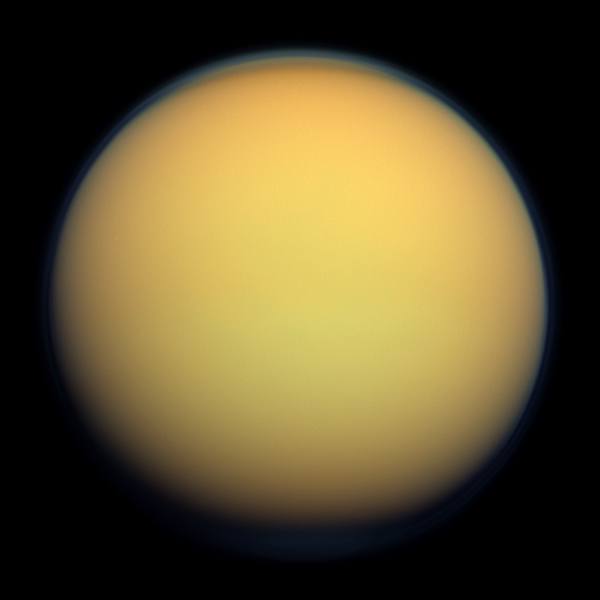*This post may contain affiliate links. This means we may make a commission if you purchase an item using one of our links*
The main differences between the Moon and Titan would be that Titan has an atmosphere very similar to that of Earth whilst the Moon has a very thin exosphere, Titan is the 2nd largest natural satellite whilst the Moon is 5th and the Moon is nearly 2 times as dense as Titan with a density of 1.88 g/cm³ compared to the Moon’s 3.34 g/cm³.
There are numerous other differences between Titan and the Moon so continue reading for a more thorough breakdown of this below.
What Is The Moon?
Table of Contents

The moon is the gray celestial being that orbits our Earth. It is also tidally locked to Earth meaning that we only see one side of it at any time in our sky.
It takes the moon roughly 27 days to complete an orbit around Earth, which it does in an elliptical pattern. The Moon’s axial tilt is very straight at 1.5 degrees. As a result of the tidally locked status along with the effects that Earth has on its general rotational patterns, it takes the Moon roughly 29.5 days to complete a day.
In regards to its temperature, it fluctuates where it can be really hot at 127 degrees Celsius when the Sun is shining on it and to -173 degrees in areas where the Sun does not strike it. It’s core on the other hand is far hotter ranging between 1,327 to 1,427 degrees Celsius.
This is as a result of the lunar entity’s extremely thin to practically non-existent atmosphere, which not only results in these massive temperature shifts but, is also the reason why it has over 100,000 craters on its surface.
Speaking of the Moon’s surface, the entity is mostly made of rocks, iron, magnesium just like most of the other moons and terrestrial based planets in our solar system.
It is among the bigger moons in our solar system with a diameter of 3,474.8km and a mass of 7.35 × 10^22 kg, which actually places it fifth amongst all moons in our solar system and would also make it bigger than the dwarf planet Pluto.
Despite all the advancements in technology, the last time a manned mission was made to the Moon was on the Apollo 17 way back in December 1972 and no further missions have been done since, possibly as result of the political agendas behind the numerous countries vying for opportunities that we don’t know of.
What Is Titan?

Titan is Saturn’s largest moon and the second biggest moon in the entire solar system, with a diameter of 5,150km. This would make it even larger than the planet Mercury which is only 4,879km, and significantly larger than Pluto also.
As a result, Titan’s gravitational strength stands at around 1.352 m/s²
It is the only natural satellite in our solar system that is composed similarly to Earth, where it has a thick atmosphere made primarily of nitrogen (95%) along with smaller amounts of methane (5%). It has rivers and lakes on its surface along with a water cycle very similar to that of Earth, where essentially water evaporates and eventually lands on the satellites surface.
Therefore, much like Earth, Titan has a terrestrial based body but, there is a difference in their atmospheric pressure. The pressure on Titan’s surface is around 60% greater than that of Earth’s surface but, it isn’t nearly as dense.
Nevertheless, it is still far denser than most other bodies at 1.88 g/cm³. As a result, Titan’s mass is 1.345×10^23 kg.
In regards to its temperature, Titan is on the colder side where it averages around -179 degrees Celsius whilst its core’s temperature is actually very cold in comparison to other entities falling between 226 – 526 degrees Celsius.
As Saturn is the 6th farthest planet from the Sun, it will take Titan roughly the same amount of time to orbit the Sun, which would fall around 29.4 years.
It takes Titan 15 days and 22 hours to orbit Saturn. A day is 15 days and 22 hours also as it is tidally locked to the gas giant.
Similarities Between The Moon And Titan
As both are natural satellites, the Moon and Titan do share a few similarities, which includes the following:
- Both have a hotter central core.
- Both have a rocky, terrestrial surface.
- Both are spherical in shape.
- Neither have rings surrounding them.
- Both are tidally locked to their planet.
- Both orbit their planet in an elliptical pattern.
Differences Between The Moon And Titan
As for the differences between the two, they include the following:
- Titan is bigger than the Moon with a diameter of 5,150km compared to the Moon’s diameter of 3474.8km.
- In regards to their gravity, the Moon’s is slightly stronger at 1.62 m/s² whereas Titan’s is 1.352 m/s².
- The moons has practically no atmosphere whilst Titan’s is very similar to that of Earth, composed of 95% nitorgen and 5% methane.
- The Moon is gray in color whilst Titan is a pale yellow color similar to that of Saturn.
- A day and a orbital cycle around Saturn for Titan would both be 15 days and 22 hours whilst a day on the Moon is 27 days and a rotation around Earth for it is 29.5 days.
- Titan has a density roughly half that of the Moon at 1.88 g/cm³ as opposed to the Moon’s 3.34 g/cm³.
- The Moon’s axial tilt is 1.5 degrees whilst Titan’s axial tilt is 27 degrees.
- In regards to temperature, the Moon fluctuates between 127 degrees Celsius and -173 degrees Celsius whilst Titan’s temperature is -179 degrees Celsius.
- Titan has a mass of 1.345×10^23 kg whilst the Moon’s mass is 7.35 × 10^22 kg.
- The Moon’s core temperature is around 1,327 – 1,427 degrees Celsius whilst Titan’s is far cooler around 226 -526 degrees Celsius.
- Titan has a water cycle very similar to that of Earth whilst the Moon has no water observable water cycle.
Summary
Titan and the Moon are both natural satellites that orbit another entity and are terrestrial planets but in terms of size, temperature, mass and more, they do have their fair share of differences too.
That’s why in the grand scheme of things, even if both are orbiting other planets they function distinctly from one another.


